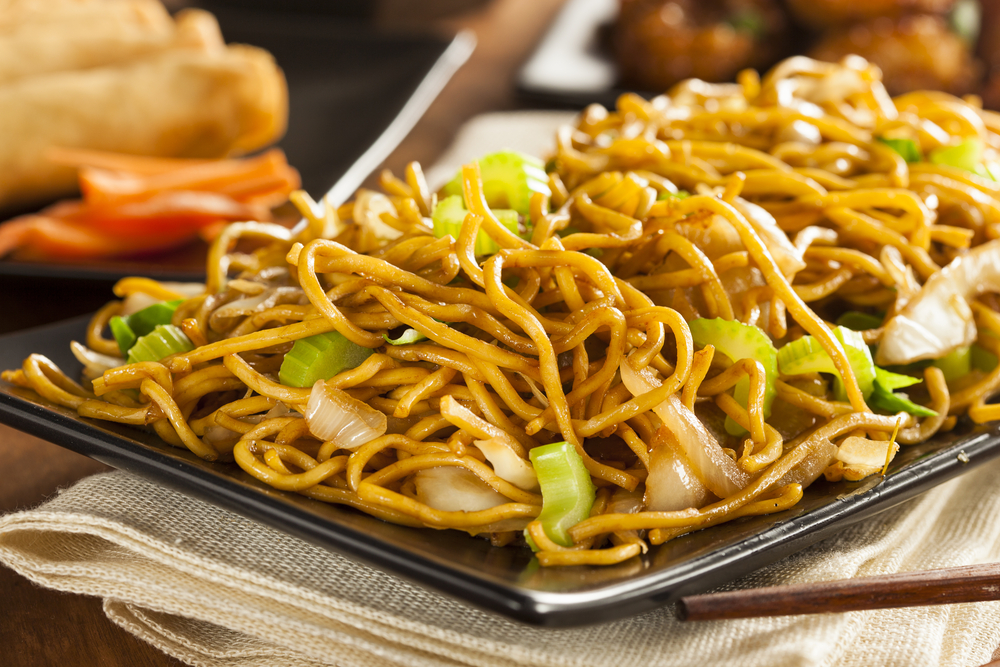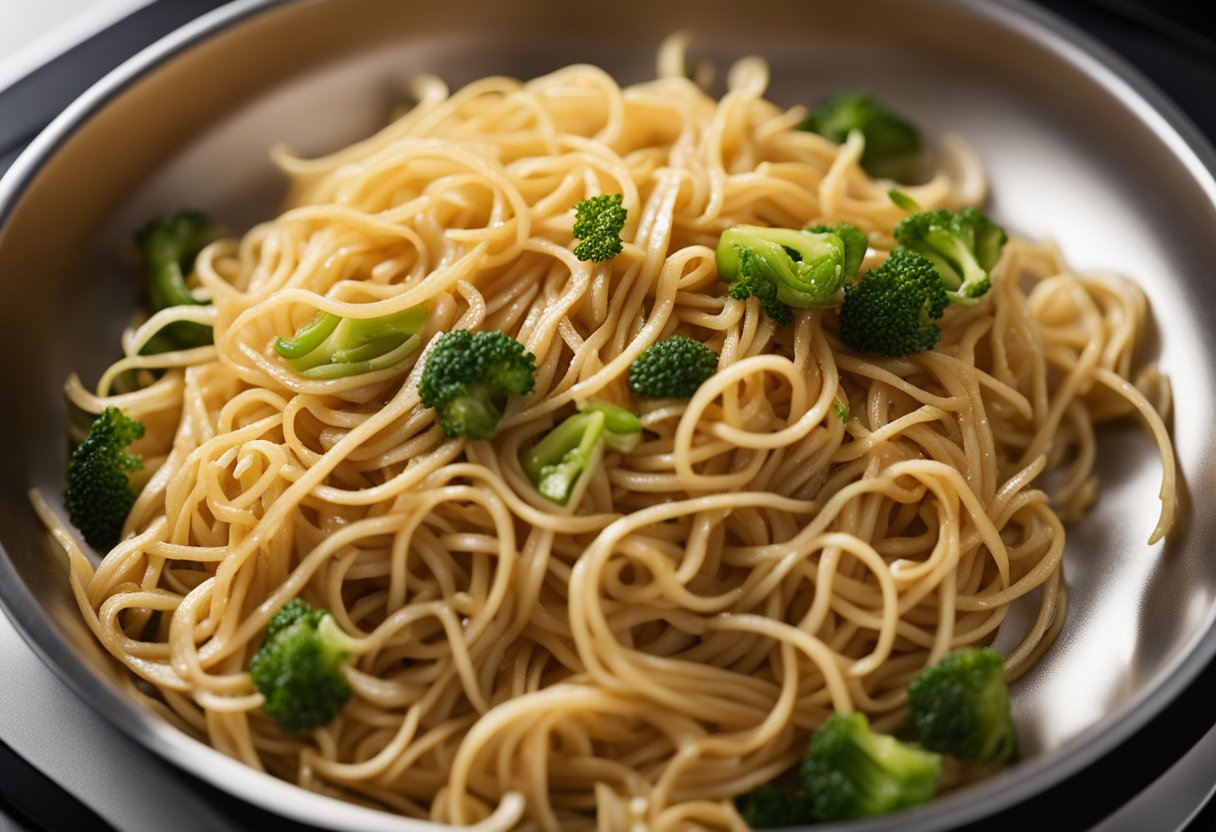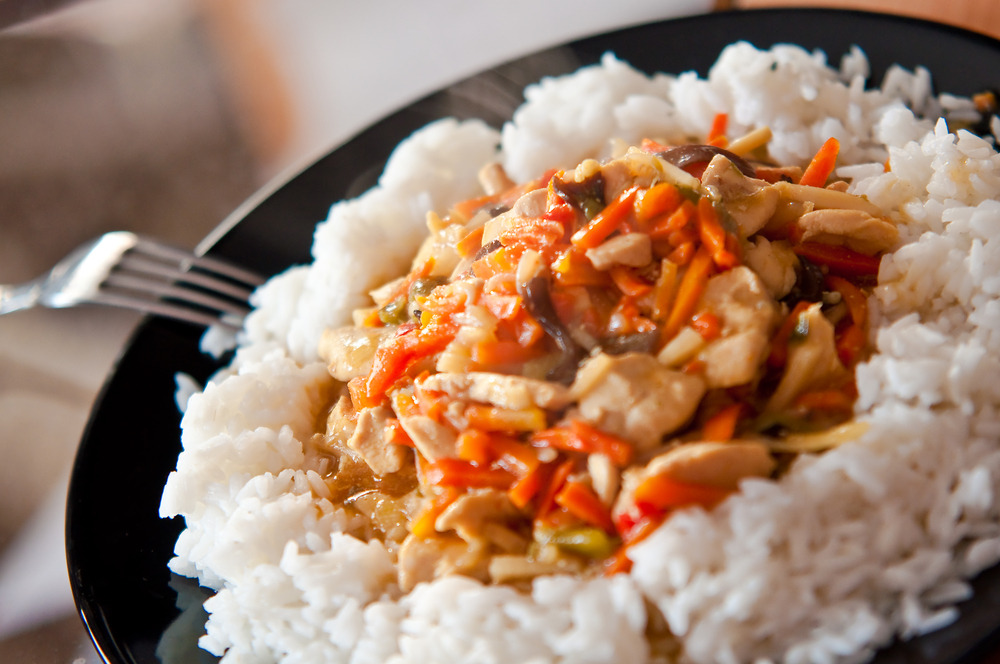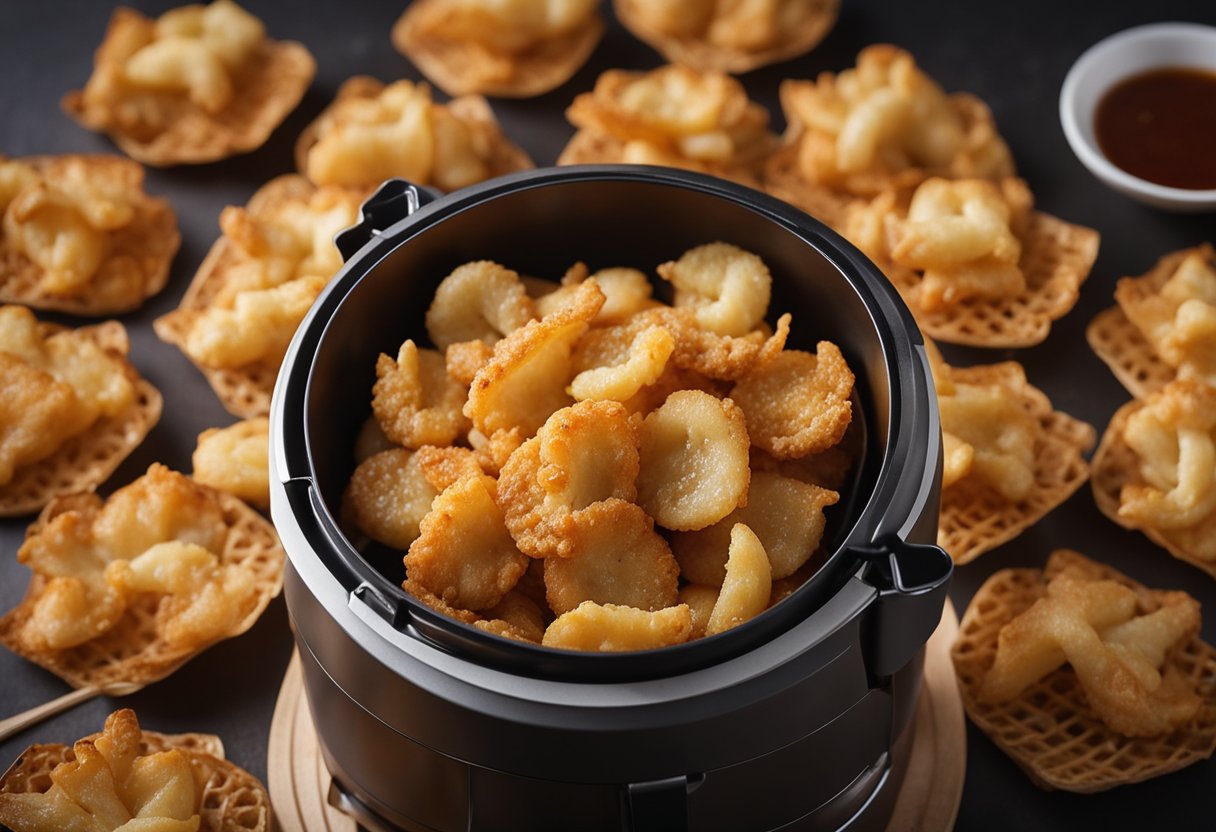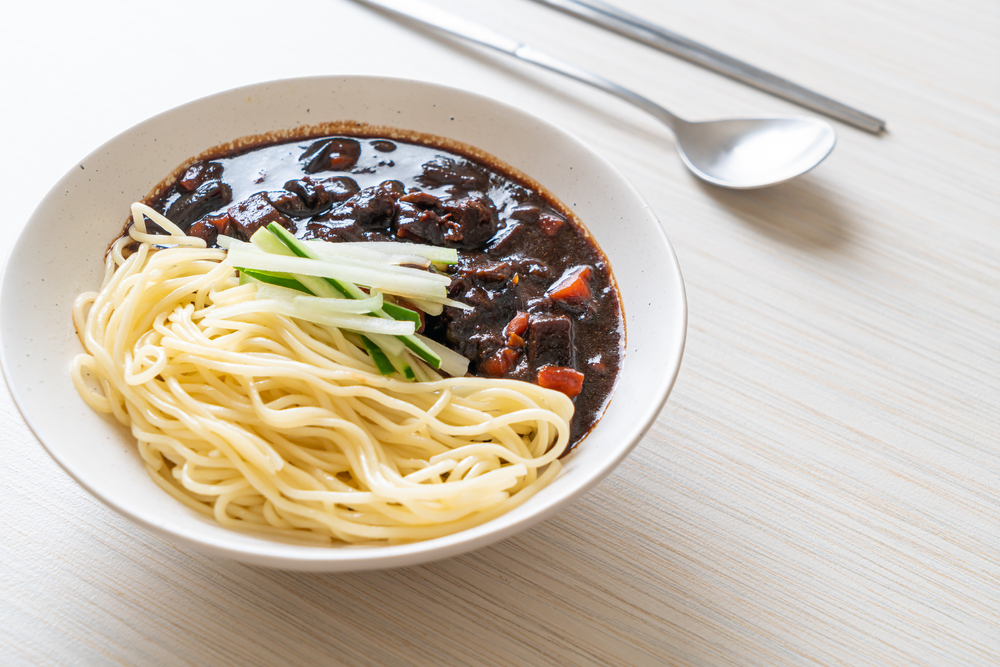Chow mein is a takeout staple, and it’s not hard to see why. With savory, chewy noodles, crunchy vegetables, and tender meat, it’s a definite crowd pleaser. Order it from your favorite takeout place, take the leftovers home from a Chinese restaurant, or make it right at home. Either way you get it, you’ll definitely want to hang on to the leftovers.
The trouble arises when it comes time to heat it back up. What’s going to treat your noodles the best? You want the meat to stay moist, but you also want the noodles to stay soft without getting soppy and mushy. There’s a careful balance you want to achieve when learning how to reheat chow mein.
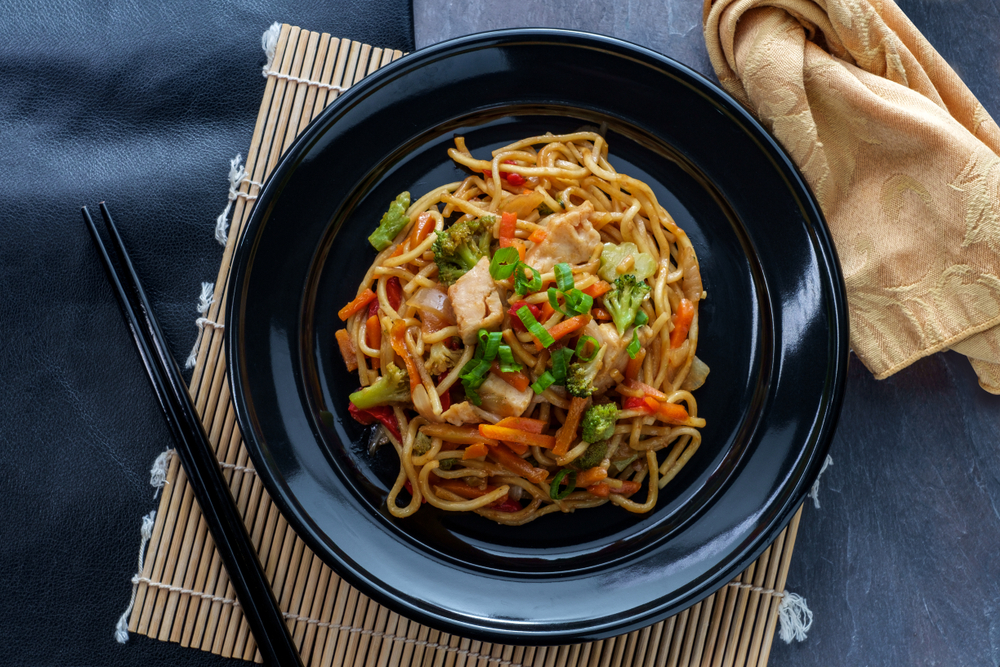
To reheat chow mein, you can rely on a wok or frying pan or a microwave for the best results. In a wok, you can refry it with a little bit of oil and give it a toss to distribute. In the microwave, add a bit of water and cover it in plastic. You can try to reheat it in the oven, but this isn’t the best way.
How To Reheat Chow Mein
The thing you want to ensure when you reheat chow mein is that the texture and flavors are preserved. Bland, mushy noodles with rubbery meat aren’t appetizing in any respect, and should be avoided.
Your home kitchen is full of things that will bring the heat to yesterday’s takeout. Of those, the stove, the oven, and the microwave are ideal for heating up leftover chow mein. However, they’re all a little different, and some methods are better than others in terms of how they’ll help the dish.
All of these methods only take a few minutes, with some variation. For the most part, you will be adding some kind of neutral oil to the noodles, and managing moisture.
- Enjoy them whether you’re 5 or 105 years old
On The Stove
To reheat chow mein on the stove, you should ideally reach for a wok. Woks distribute heat in a very specific manner. This heat redirection will only help maintain the textures and flavors of your dish. If you don’t have a wok, a large saucepan will still get the job done effectively.
When you cook it, use a neutral oil to keep the noodles moist. You can also add soy sauce or hoisin if you’re concerned about a loss of flavors.
How To Reheat Chow Mein On The Stove
- Heat a wok or other nonstick saucepan over medium-high heat.
- Add a tablespoon of neutral oil, such as canola, olive oil, or vegetable oil. Wait a minute or so for it to get hot. You can test the heat by dropping in one tiny bit of noodle. When it makes contact, you should see it sizzle.
- Introduce the noodles into the pan and give them a toss using kitchen tongs. You can probably heat quite a lot of your noodles in a wok. However, you don’t want to crowd the pan. If it’s hard to toss without noodles spilling out, you’ve got too much in. Cook noodles in batches if needed.
- After the noodles have heated for 3-4 minutes, they should be completely done.

Using a wok on the stove is the best way to reheat chow mein. It will help keep the flavors vibrant and the textures pleasant. Frequent tossing and good heat distribution meant that nothing got mushy or rubbery.
Tips:
If you see that your noodles have gone dry in the pan, add a bit of water or soy sauce. You can also add a light vegetable or chicken stock for an additional kick of flavor. Be careful with adding flavored liquids, as the noodles themselves might already be salty, and you don’t want to overdo it.
Use your best judgement when it comes to the amount of oil you use in cooking your chow mein. If the noodles you have are already fairly oily from the get-go, you don’t want to add too much in. This could make the noodles far too greasy.
The skillet method is excellent because it allows you to add fresh ingredients as well. Add a few cloves of diced garlic or ginger, fresh cabbage, julienned carrots for crunch, or anything else you might want to enhance the recipe. Diced up chili peppers can add spiciness to the noodles, so that they’re not just reheated, but reworked into something new.
- Thick restaurant style Chow Mein noodles in Teriyaki Beef Flavor
- Savory sauce and assorted vegetables
- Microwavable in 5 minutes
- No added MSG
- Noodle goodness on the go
Kitchen tongs are the best tool for tossing the noodles. They’ll ensure that everything in the pan is kept moving. You want this, because noodles left at the bottom of the pan too long can get greasy or soggy. Overcooking is a big risk if you’re just using a spatula or spoon.
In The Microwave
No one can doubt the convenience of the microwave. Of these methods, this is definitely the fastest way to bring your Chinese leftovers back to life. It might not be quite as effective as reheating them on the stove, but it’s perfect in a pinch.
How To Reheat Chow Mein In The Microwave
- Load your noodles up in a microwave-safe bowl. If you want to add extra water or sauce in the case of dry noodles, do so now. Give them a light stir to distribute.
- Cover the chow mein with either a damp paper towel or plastic wrap that has been slightly wetted on one side. Leave a small gap or vent so that steam can escape.
- Microwave in 30 second intervals, giving the noodles a stir in between. How many rounds of this you’ll need depends on how much food you have, and how powerful your appliance is.
- Once they’re heated to your liking, let the noodles rest for 60 seconds. This will give them time to ‘settle’, and for the heat to fully re-cook everything.

This is a convenient method, though not without some faults. It might render your noodles a little chewy, and it could dull the flavors. However, if you’re short on time or energy, the trusty microwave will do the trick. You might be able to tell that they’re second-day (or third-day!) leftovers, but they’ll still hit the spot.
Tips
Try not to use the microwave technique with seafood chow mein. Seafood will overcook in a flash when put into the microwave. This will leave you with rubbery, chewy shrimp or squid.
If you don’t have access to a stove (in a hotel room or college dorm, for example), you can still reheat chow mein with seafood in it, you might just have to be more careful. As tedious as it sounds, take a minute to pick out the seafood and heat it separately. Try going for 10 second intervals, testing it each time for doneness.
Unfortunately with seafood, it can be perilously hard to reheat without the use of a stove or oven.
It could be tempting to reheat your noodles in the container they came in, but be cautious. If the container specifically touts that it’s microwave safe, you should be alright to proceed. However, you should avoid microwave styrofoam or some plastic containers. Additionally, it should go without saying that you shouldn’t put a metal takeout container into the microwave.
The reason you shouldn’t use styrofoam or plastic is that, in the microwaving process, they’ll release harmful chemicals into your food. Use containers that are labeled as being BPA free, or a microwave safe dish.
In The Oven
This method isn’t the best in terms of keeping the flavor or texture intact. However, if you’ve got a large, family-sized batch of chow mein to reheat, this can save you time. As with any other method, you’ll want to keep the moisture levels in check.
How To Reheat Chow Mein In The Oven
- Preheat your oven to 350F/180C.
- Lay your chow mein out in an even layer, keeping it as thin as you can. You should use a baking dish that has walls to help trap and redirect the heat.
- Add in a few tablespoons of water or soy sauce, tossing lightly to coat. This is going to help keep the chow mein from drying out. Be mindful to not add too much, as you don’t want to create a mush.
- Cover with foil and bake for 5 to 10 minutes.

The liquid will create steam in this method that will help permeate and re-moisturize the noodles. This keeps them from becoming dry and unappetizing. Soy sauce or chicken stock are great for these, as they’ll mitigate any loss of flavors.
Tips
This isn’t the ideal method for reheating chow mein, because it runs a very fine line between dry noodles and mushy ones. Slow heating means the noodles are likely to overcook, but they’ll also lose a little moisture in the cooking process.
- Chow mein noodles with gravy
Try to give the noodles a quick toss with kitchen tongs halfway through the cooking time. It’ll help keep them from getting too dry, or too mushy. Ultimately, you might still have a slightly unmanaged texture to chow mein reheated in the oven.
From Frozen
If you’ve got frozen chow mein, you’ll want to give it time to defrost first. Defrost your chow mein noodles in the fridge for a few hours before you begin to cook it in the pan. Thankfully, it doesn’t take too long; just about 2-4 hours should do it. You can take it out of the freezer in the morning and have it ready to cook by dinner time.
If you’re hungry right now, though, you can still enjoy your chow mein. Take your bag or container of chow mein and set it in a pot full of room temperature water. Then, allow a trickle of cool water to pour over it in the sink. The laws of thermodynamics are at play here, and the metal walls of the pot will help thaw the noodles on all sides. Your noodles will be thawed in about 20 minutes.
Once it’s thawed, all you have to do is cook it using your favorite method.
You shouldn’t reheat chow mein straight from frozen, since it may have developed ice crystals. If there are ice crystals present, they’ll react to sudden heating poorly, and could change the texture of your food in a bad way.
How To Store Chow Mein

The way you store your chow mein will have a big impact on how it reheats. If you’re cooking it from home, you’ll of course going to use your own storage bags or containers to keep it in the fridge or freezer. If this is a takeaway situation though, you might be better off swapping their storage method for your own.
While the plastic, paper board, or styrofoam containers you got the food in are fine for transporting it from the restaurant to your house, it’s not ideal for storage. Sure, it might be easy to pop it right in the fridge that way, but if you want to know how to reheat chow mein the best possible way, you’ll need to store it right.
In The Fridge
The most common way to store chow mein is in the fridge. Once you’ve eaten all of the delicious savory noodles you can handle, simply tucking them away in the fridge is the best way to ensure they’re ready to eat tomorrow. But doing just a quick change to them will make it much easier to reheat them the next day.
Cool Things Down
Let the noodles cool to room temperature before you store them away. This keeps condensation from forming, which can make your chow mein mushy the next day. After all, the important thing to know in reheating chow mein is how to maintain the texture of the noodles.
Be mindful that you’re not leaving it out to cool down for too long, though. As with any food, it will start to enter the bacterial danger zone after two hours. Don’t leave it to sit out any longer than that, and ensure that it’s covered the whole time.
Use Your Own Container
Transfer the food into an airtight container. A plastic bag is great for this, as you can easily remove the extra air, but regular tupperware will do the job as well.
Why shouldn’t you just use the takeout containers? Well, the answer is about air retention. When your chow mein is given access to open air, it will start to dry out the noodles.
Surely you’ve noticed that as chow mein cools down when you eat it slowly, they start to get a bit tacky in texture. This is because the air is reacting with the starches in the noodles, causing them to change their molecular structure and become ‘dry’.
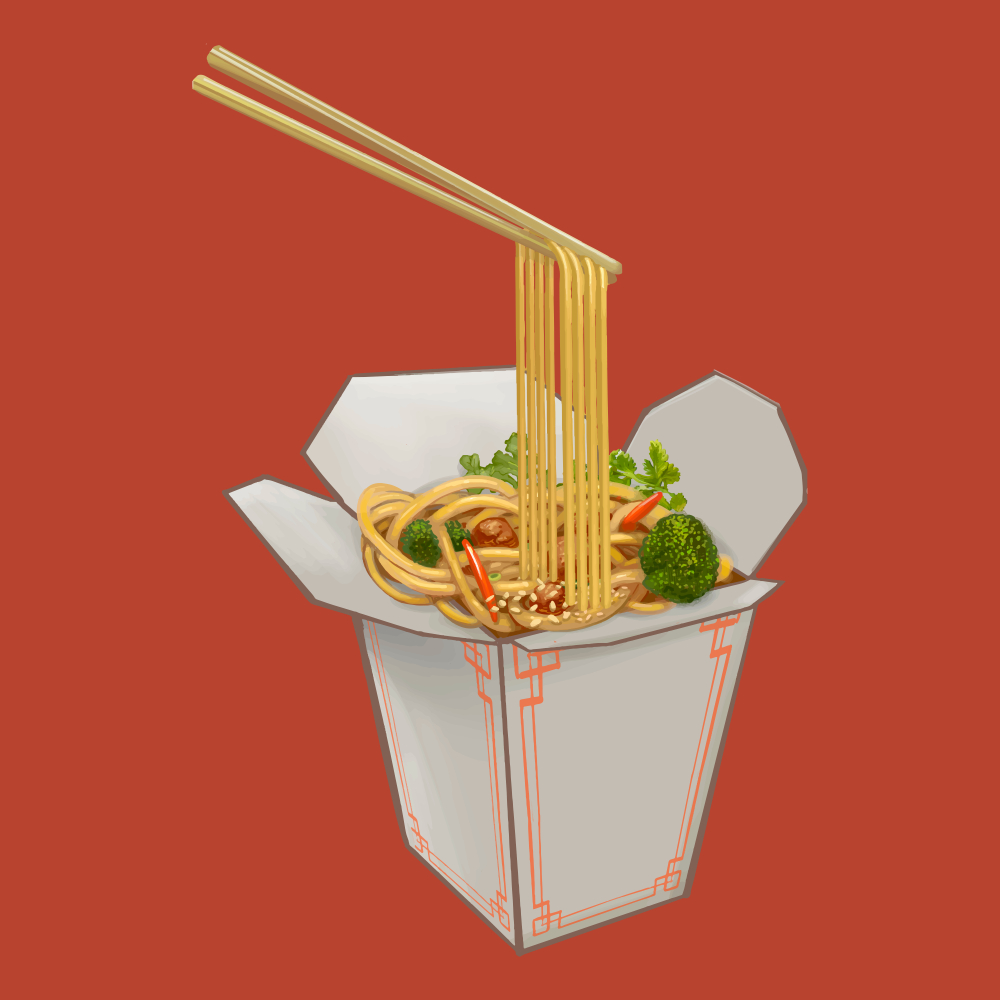
So when you put the noodles away in the storage container they were brought to you in, you can’t really be sure that these vessels are airtight. In fact, in many cases, they’re not. That’s why an airtight container is your best friend here. It will keep the molecules in your chow mein from changing so deeply in structure that they’re impossible to reinvigorate properly.
When you go to reheat leftover chow mein the next day, you’ll notice the difference in their texture.
Don’t Keep It Too Long
You should only hang on to your chow mein in the fridge for 3-4 days. After that, you’re leaving the door open to bacterial growth and spoiling. Not to mention that after several rounds of reheating chow mein, the texture and flavors are going to take a big hit.
In The Freezer
Looking to keep your chow mein long term? Freezing it is the option for you, and the way you do it will make reheating it much easier. Chow mein is great for meal-prepping, and can last 2-3 months in the freezer.
As with most frozen leftovers, you can still technically eat it after 2-3 months, but you’ll notice that the texture isn’t what it used to be. Certain veggies that might be in the dish, like bok choy or cabbage, will go limp after being frozen for a while. Keep that in mind when you’re reaheating it.
How To Freeze Chow Mein For Best Possible Reheating
- Just as with the refrigerator, you’ll need to make sure your noodles are plenty cooled down before they are frozen. They should be at room temperature. Freezing them when they’re hot will lead to issues with condensation, leading to mushy noodles upon reheating.
- Divide the chow mein into portions that you’re going to eat it in. You can do this in single serve batches, or in an amount that will feed your family. Just keep in mind that it’s easier to reheat smaller batches at once. The oven can work if you’re reheating a lot of it, but it doesn’t have the best results. If you have a large wok, though, the stove should be able to handle it.
- Place your portions into air-tight containers. Freezer bags are the best for this, because they are the best for squeezing out air.
- Remove as much air from your storage container as you can manage. For a freezer bag, you can push down on the bag and shove air out. You can also use a straw to suck it out. In a container, use plastic wrap to push down on the surface of the noodles and force extra air away before sealing.
- Freeze the chow mein for 2-3 months. Remember to label the bag or container to make it easier to locate and identify later.

Another easy way to get the air out of a freezer bag is to place the bag in a bowl of water. It should be deep enough that it doesn’t flood the bag, but it gets close. This will force the air out, giving you a chance to seal it.
Then you’re ready to send it to the freezer. If you are meal prepping and looking to reheat the noodles later, keep a few things in mind:
- Slightly undercooked noodles will reheat better than fully cooked ones. When the noodles are under done, what would normally make noodles mushy will only make them finish cooking. This will leave them with a pleasant chew, instead of a soggy one. The more cooked your chow mein is, the harder it’ll be to keep an eye on the texture during reheating.
- Some vegetables simply do not stand up to being frozen. While others will do fine, like onions, leafy greens won’t thrive in that environment. Bok choy, leeks, and cabbage will become soggy and sad in the freezer, meaning they’ll stay that way when reheated. Add vegetables you want to be bright and crunchy while you’re reheating it, instead of beforehand.
The way you freeze your chow mein will have a big impact on how you reheat it. Doing so incorrectly will put you a step behind in the reheating process. It will be much harder to manage getting that ideal chewy, tasty noodle, with meat that is tender and fresh.
Conclusion
When the dinner is done, you know you’ve got some delicious leftovers to look forward to the next day. If you’ve got a lot — which no one is really complaining about — the day after that, too. To keep your chow mein as tasty as it was the first time around, you’ll want to know how to reheat chow mein.
The best possible way to reheat chow mein is on the stove. The stove will make the heat and moisture work in favor of the noodles, vegetables, and meats. A wok is especially good for this. Simply toss your leftover chow mein in the wok with a bit of oil for a few minutes, and the dish is ready to be enjoyed.
In the microwave you might not see as much success in terms of flavor and texture, but it’s certainly the fastest and easiest route. Cover your leftovers with a damp paper towel or plastic wrap and heat it for only about 30 seconds.
The oven is a manageable way to reheat a large amount of chow mein, but it’s not ideal. It will make the texture either too dry or too stodgy. Finding the right balance is tricky, but it certainly can be done.





